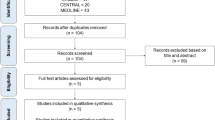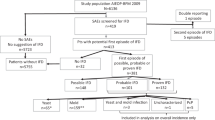Abstract
Pneumocandins have concentration-dependent antifungal activity and higher dose of caspofungin (HD-CAP) in combination with other licensed antifungal therapy (OLAT) may improve response. Thirty-four patients who received HD-CAP were compared with 63 patients who received standard dose (SD)-CAP. There were no differences between the groups in either patient or disease characteristics. Significantly more patients in the HD-CAP arm had extrapulmonary infections (29 vs 8% in SD group; P=0.0053), and non-Aspergillus species infection (21 vs 6%; P=0.05) and had received prior antifungal therapy (71 vs 33%; P=0.0004). No serious adverse reactions were noted in patients receiving HD- or SD-CAP therapy. Twelve weeks after treatment commenced 44% had a complete or partial response compared with 29% in SD-CAP group (P=0.1). Logistic regression analysis showed a significant probability of a favorable outcome at 12 weeks in patients who received HD-CAP (OR 3.066, 95% CI, 1.092–8.61; P=0.033). This may in part reflect higher number of patients in HD group had received granulocyte–macrophage colony-stimulating factor (41 vs 14% in SD group; P=0.04) and/or interferon γ (26 vs 5% in SD group; P=0.003) immune enhancement. Further studies are needed to evaluate efficacy of HD-CAP in severely immunosuppressed cancer patients with invasive fungal infections.
This is a preview of subscription content, access via your institution
Access options
Subscribe to this journal
Receive 12 print issues and online access
$259.00 per year
only $21.58 per issue
Buy this article
- Purchase on Springer Link
- Instant access to full article PDF
Prices may be subject to local taxes which are calculated during checkout


Similar content being viewed by others
References
Safdar A, Armstrong D . Infectious morbidity in critically ill patients with cancer. Crit Care Clin 2001; 17: 531–570.
Lin SJ, Schranz J, Teutsch SM . Aspergillosis case-fatality rate: systematic review of the literature. Clin Infect Dis 2001; 32: 358–366.
Deresinski SC, Stevens DA . Caspofungin. Clin Infect Dis 2003; 36: 1445–1457.
Maertens J, Raad I, Petrikkos G, Boogaerts M, Selleslag D, Petersen FB et al., Caspofungin Salvage Aspergillosis Study Group. Efficacy and safety of caspofungin for treatment of invasive aspergillosis in patients refractory to or intolerant of conventional antifungal therapy. Clin Infect Dis 2004; 39: 1563–1571.
Kartsonis NA, Saah AJ, Joy Lipka C, Taylor AF, Sable CA . Salvage therapy with caspofungin for invasive aspergillosis: results from the caspofungin compassionate use study. J Infect 2005; 50: 196–205.
Perea S, Gonzalez G, Fothergill AW, Kirkpatrick WR, Rinaldi MG, Patterson TF . In vitro interaction of caspofungin acetate with voriconazole against clinical isolates of Aspergillus spp. Antimicrob Agents Chemother 2002; 46: 3039–3041.
Cuenca-Estrella M, Gomez-Lopez A, Garcia-Effron G, Alcazar-Fuoli L, Mellado E, Buitrago MJ et al. Combined activity in vitro of caspofungin, amphotericin B, and azole agents against itraconazole-resistant clinical isolates of Aspergillus fumigatus. Antimicrob Agents Chemother 2005; 49: 1232–1235.
Kirkpatrick WR, Perea S, Coco BJ, Patterson TF . Efficacy of caspofungin alone and in combination with voriconazole in a guinea pig model of invasive aspergillosis. Antimicrob Agents Chemother 2002; 46: 2564–2568.
Marr KA, Boeckh M, Carter RA, Kim HW, Corey L . Combination antifungal therapy for invasive aspergillosis. Clin Infect Dis 2004; 39: 797–802.
Cesaro S, Toffolutti T, Messina C, Calore E, Alaggio R, Cusinato R et al. Safety and efficacy of caspofungin and liposomal amphotericin B, followed by voriconazole in young patients affected by refractory invasive mycosis. Eur J Haematol 2004; 73: 50–55.
Aliff TB, Maslak PG, Jurcic JG, Heaney ML, Cathcart KN, Sepkowitz KA et al. Refractory Aspergillus pneumonia in patients with acute leukemia: successful therapy with combination caspofungin and liposomal amphotericin. Cancer 2003; 97: 1025–1032.
Kontoyiannis DP, Hachem R, Lewis RE, Rivero GA, Torres HA, Thornby J et al. Efficacy and toxicity of caspofungin in combination with liposomal amphotericin B as primary or salvage treatment of invasive aspergillosis in patients with hematologic malignancies. Cancer 2003; 98: 292–299.
Wiederhold NP, Kontoyiannis DP, Chi J, Prince RA, Tam VH, Lewis RE . Pharmacodynamics of caspofungin in a murine model of invasive pulmonary aspergillosis: evidence of concentration-dependent activity. J Infect Dis 2004; 190: 1464–1471.
Stone JA, Holland SD, Wickersham PJ, Sterrett A, Schwartz M, Bonfiglio SA et al. Single- and multiple-dose pharmacokinetics of caspofungin in healthy men. Antimicrob Agents Chemother 2002; 46: 739–745.
Stone JA, Xu X, Winchell GA, Deutsch PJ, Pearson PG, Migoya EM et al. Disposition of caspofungin: role of distribution in determining pharmacokinetics in plasma. Antimicrob Agents Chemother 2004; 48: 815–823.
Larone D . Medically Important Fungi: a Guide to Identification. ASM Press: Washington, DC, 1995.
Ascioglu S, Rex JH, de Pauw B, Bennett JE, Crokaert F, Denning DW et al., Invasive Fungal Infections Cooperative Group of the European Organization for Research and Treatment of Cancer; Mycoses Study Group of the National Institute of Allergy and Infectious Diseases. Defining opportunistic invasive fungal infections in immunocompromised patients with cancer and hematopoietic stem cell transplants: an international consensus. Clin Infect Dis 2002; 34: 7–14.
Safdar A, Singhal S, Mehta J . Clinical significance of non-Candida fungal blood isolation in patients undergoing high-risk allogeneic hematopoietic stem cell transplantation (1993–2001). Cancer 2004; 100: 2456–2461.
Kontoyiannis DP, Bodey GP, Hanna H, Hachem R, Boktour M, Girgaway E et al. Outcome determinants of fusariosis in a tertiary care cancer center: the impact of neutrophil recovery. Leuk Lymphoma 2004; 45: 139–141.
Lionakis MS, Bodey GP, Tarrand JJ, Raad II, Kontoyiannis DP . The significance of blood cultures positive for emerging saprophytic moulds in cancer patients. Clin Microbiol Infect Dis 2004; 10: 922–925.
Knaus WA, Draper EA, Wagner DP, Zimmerman JE . APACHE II: a severity of disease classification system. Crit Care Med 1985; 13: 818–829.
Cancer Therapy Evaluation Program. Common Terminology Criteria for Adverse Events, Version 3.0, DCTD, NCI, NIH, DHHS (http://ctep.cancer.gov). June 10, 2003.
Safdar A, Rodriguez G, Ohmagari N, Kontoyiannis DP, Rolston KV, Raad II et al. The safety of interferon-gamma-1b therapy for invasive fungal infections after hematopoietic stem cell transplantation. Cancer 2005; 103: 731–739.
Safdar A, Hanna HA, Boktour M, Knotoyiannis DP, Hachem R, Lichtiger B et al. Impact of high-dose granulocyte transfusions in patients with cancer with candidemia: retrospective case–control analysis of 491 episodes of Candida species bloodstream infections. Cancer 2004; 101: 2859–2865.
Stevens DA, Espirtu M, Parmar R . Paradoxical effect of caspofungin: reduced activity against Candida albicans at high drug concentration. Antimicrob Agents Chemother 2004; 48: 3407–3411.
Eagle H, Musselman AD . The rate of bactericidal action of penicillin in vitro as a function of its concentration, and its paradoxically reduced activity at high concentrations against certain organisms. J Exp Med 1948; 88: 99–131.
Kondo N, Kuwahara-Arai K, Kuroda-Murakami H, Tateda-Suzuki E, Hiramatsu K . Eagle-type methicillin resistance: new phenotype of high methicillin resistance under mec regulatory gene control. Antimicrob Agents Chemother 2001; 45: 815–824.
Ibrahim AS, Bowman JC, Avanessian V, Brown K, Spellberg B, Edwards JE et al. Caspofungin inhibits Rhizopus oryzae 1,3-beta-D-glucan synthase, lowers burden in brain measured by quantitative PCR, and improves survival at a low but not a high dose during murine disseminated zygomycosis. Antimicrob Agents Chemother 2005; 49: 721–727.
Nucci M, Marr KA, Queiroz-Telles F, Martins CA, Trabasso P, Costa S et al. Fusarium infection in hematopoietic stem cell transplant recipients. Clin Infect Dis 2004; 38: 1237–1242.
Marr KA, Carter RA, Crippa F, Wald A, Corey L . Epidemiology and outcome of mould infections in hematopoietic stem cell transplant recipients. Clin Infect Dis 2002; 34: 909–917.
Husain S, Munoz P, Forrest G, Alexander BD, Somani J, Brennan K et al. Infections due to Scedosporium apiospermum and Scedosporium prolificans in transplant recipients: clinical characteristics and impact of antifungal agent therapy on outcome. Clin Infect Dis 2005; 40: 89–99.
Steinbach WJ, Benjamin Jr DK, Kontoyiannis DP, Perfect JR, Lutsar I, Marr KA et al. Infections due to Aspergillus terreus: a multicenter retrospective analysis of 83 cases. Clin Infect Dis 2004; 39: 192–198.
Safdar A, Papadopoulos EB, Young JW . Breakthrough Scedosporium apiospermum (Pseudallescheria boydii) brain abscess during therapy for invasive pulmonary aspergillosis following high-risk allogeneic hematopoietic stem cell transplantation. Scedosporiasis and recent advances in antifungal therapy. Transpl Infect Dis 2002; 4: 212–217.
Safdar A . Progressive cutaneous hyalohyphomycosis due to Paecilomyces lilacinus: rapid response to treatment with caspofungin and itraconazole. Clin Infect Dis 2002; 34: 1415–1417.
Rossmann S, Cernoch P, Davis J . Dematiaceous fungi are an increasing cause of human disease. Clin Infect Dis 1996; 22: 73–80.
Baden LR, Katz JT, Fishman JA, Koziol C, DelVecchio A, Doran M et al. Salvage therapy with voriconazole for invasive fungal infections in patients failing or intolerant to standard antifungal therapy. Transplantation 2003; 76: 1632–1637.
Dannaoui E, Lortholary O, Dromer F . In vitro evaluation of double and triple combination of antifungal drugs against Aspergillus fumigatus and Aspergillus terreus. Antimicrob Agents Chemother 2004; 48: 970–978.
Spellberg B, Fu Y, Edwards JE, Ibrahim AS . Combination therapy with amphotericin B lipid complex and caspofungin acetate of disseminated zygomycosis in diabetic ketoacidotic mice. Antimicrob Agents Chemother 2005; 49: 830–832.
MacCallum DM, Whyte JA, Odds FC . Efficacy of caspofungin and voriconazole combinations in experimental aspergillosis. Antimicrob Agents Chemother 2005; 49: 3697–3701.
Clemons KV, Espiritus M, Parmar R, Stevens DA . Comparative efficacy of conventional amphotericin B, liposomal amphotericin B (AmBisome), caspofungin, micafungin, ad voriconazole alone and in combination against experimental murine central nervous system aspergillosis. Antimicrob Agents Chemother 2005; 49: 4867–4875.
Sionov E, Mendlovic S, Segal E . Efficacy of amphotericin B or amphotericin B – intralipid in combination with caspofungin against experimental aspergillosis. J Infect 2006; 53: 131–139.
Viscoli C . Combination Therapy for invasive aspergillosis. Clin Infect Dis 2004; 39: 803–805.
Nivoix Y, Zamfir A, Lutun P, Kara F, Remy V, Lioure B et al. Combination of caspofungin and an azole or an amphotericin B formulation in invasive fungal infections. J Infect 2006; 52: 67–74.
Sionov E, Mendlovic S, Segal E . Experimental systemic murine aspergillosis: treatment with polyene and caspofungin combination and G-CSF. J Antimicrob Chemother 2005; 56: 594–597.
Safdar A, Rodriguez GH, Lichtiger B, Dickey BF, Knotoyiannis DP, Freireich EH et al. Recombinant interferon gamma 1b immune enhancement in 20 patients with hematologic malignancies and systemic opportunistic infections treated with donor granulocyte transfusions. Cancer 2006; 106: 2664–2671.
Safdar A . Strategies to enhance immune function in hematopoietic transplantation recipients who have fungal infections. Bone Marrow Transplant 2006; 38: 327–337.
Acknowledgements
Portions of this study were presented at the 15th European Congress of Clinical Microbiology and Infectious Diseases, April 2–5, 2005, Copenhagen, Denmark (Abstract # O343) and the 45th Interscience Conference on Antimicrobial Agents and Chemotherapy, (Abstract # M-955), December 16–19, 2005, Washington, DC, USA. We thank Carla Warneke of the Department of Biostatistics and Applied Mathematics for her assistance in the data analysis.
Author information
Authors and Affiliations
Corresponding author
Rights and permissions
About this article
Cite this article
Safdar, A., Rodriguez, G., Rolston, K. et al. High-dose caspofungin combination antifungal therapy in patients with hematologic malignancies and hematopoietic stem cell transplantation. Bone Marrow Transplant 39, 157–164 (2007). https://doi.org/10.1038/sj.bmt.1705559
Received:
Revised:
Accepted:
Published:
Issue Date:
DOI: https://doi.org/10.1038/sj.bmt.1705559
Keywords
This article is cited by
-
Extrapolating Antifungal Animal Data to Humans—Is It Reliable?
Current Fungal Infection Reports (2020)
-
Paradoxical growth effect of caspofungin on Candida spp. sessile cells not only at high drug concentrations
The Journal of Antibiotics (2019)
-
In vitro activity of micafungin against biofilms of Candida albicans, Candida glabrata, and Candida parapsilosis at different stages of maturation
Folia Microbiologica (2018)
-
Dose Reduction of Caspofungin in Intensive Care Unit Patients with Child Pugh B Will Result in Suboptimal Exposure
Clinical Pharmacokinetics (2016)
-
High-Dose Caspofungin is Safe for Adult Patients with Invasive Candidiasis
Current Fungal Infection Reports (2011)



